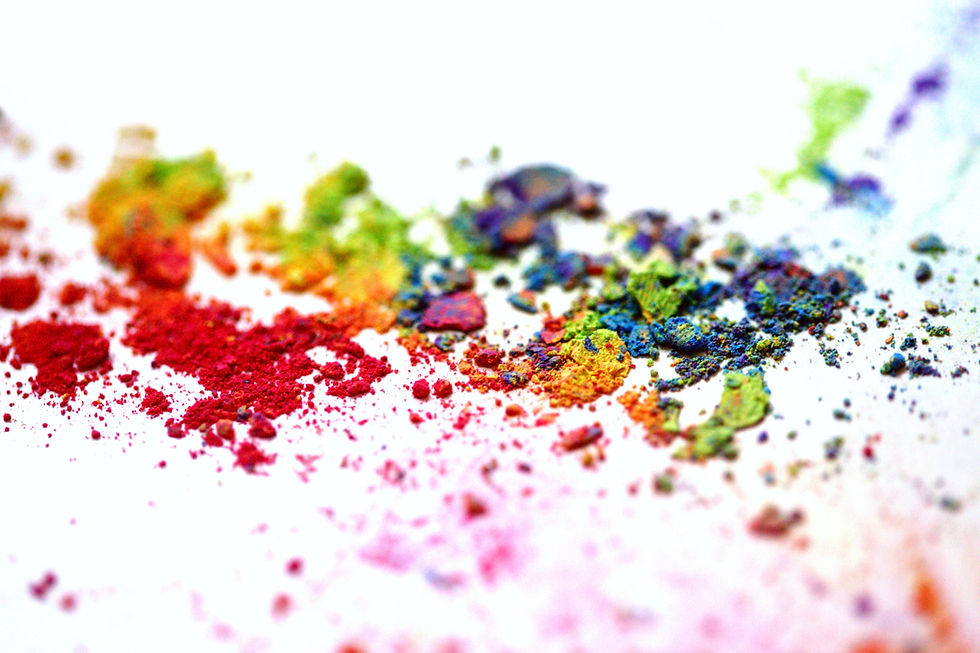Orange, the invigorating love-it-or-hate-it colour
- Laura Longoni

- Jan 26, 2024
- 2 min read
Updated: Mar 5

This is my second stop during my journey to discover every chromatic colour of the colour wheel and it is all about "Orange", the colour that we automatically associate to warmth and autumn.
Orange is the chromatic colour between yellow and red on the spectrum of light, with a dominant wavelength between roughly 585 and 620 nanometres.
It is a secondary colour in the CMY(K) and RYB colour mixing models and a tertiary colour in the RGB one.
In this post I will talk about the origin of the colour name itself, its meaning in psychology and symbolism, the most important pigments and shades for art.
Where does the colour name "orange" come from?
In English the colour “orange” is named after the fruit orange. The word orange origins from the French word “orange” or “pomme d’orange” that at the same time comes from the Italian word “arancia”.
What does the colour orange mean in psychology?
As a colour resulting from the mixture of yellow and red, two warm, bright and full of energy colours, orange is considered a stimulating colour that is able to attract the attention of the observer. For this reason it is often used as a warning colour.
In the colour psychology it has both a positive meaning and represents friendship, humour, vitality, youth, creativity and a negative meaning representing pride, superficiality, impatience.
Sometimes, due to its empowering nature, the colour can have an exhausting effect if overused, so that this colour can be considered as a one that either you love or hate.
What are the most important orange pigments?
The main minerals used to produce this colour were realgar and orpiment, very toxic due to their arsenic content.
Today the colour orange is mainly synthetic origin and made from the pigments cadmium orange (originated from cadmium sulphide) and quinacridone orange.
Most important orange pigments, indicated with the letters PO in The Color of Art Pigment Database, are:
PO13 Benzidine Orange
PO20 Cadmium Orange
PO34 Pyrazolone Orange
PO48 Quinacridone Burnt Orange
PO73 Pyrrol Orange
What are the most common shades of orange?
Cadmium Orange
The second colour from the cadmium pigments' family is orange, whose production started after 1820. Cadmium Orange (PO20) is a bright, warm and opaque colour and a variation of cadmium yellow, where the elements used to produce the yellow are combined in a different way to get the orange.
Brown, a composite shade of orange
Brown, a neutral (non-chromatic) colour, is a very particular colour. Beside the pure PBr-pigments, it can be obtained either as a shade of orange, by mixing orange with black, or by mixing all the three primary colours.
Final words.
This was my second stop on my journey to discover each chromatic colour of the color wheel. As we have seen, orange is a very invigorating and inspiring colour, full of vitality, with wonderful warm shades, whose use should not be exaggerated.
Is orange your favourite colour?
Thank you for reading. If you like the post, leave a like, a comment and don't forget to follow my blog, Instagram and Threads and share the content on your social media.
Until then I hope you will have a great creative day!
Laura




Comments